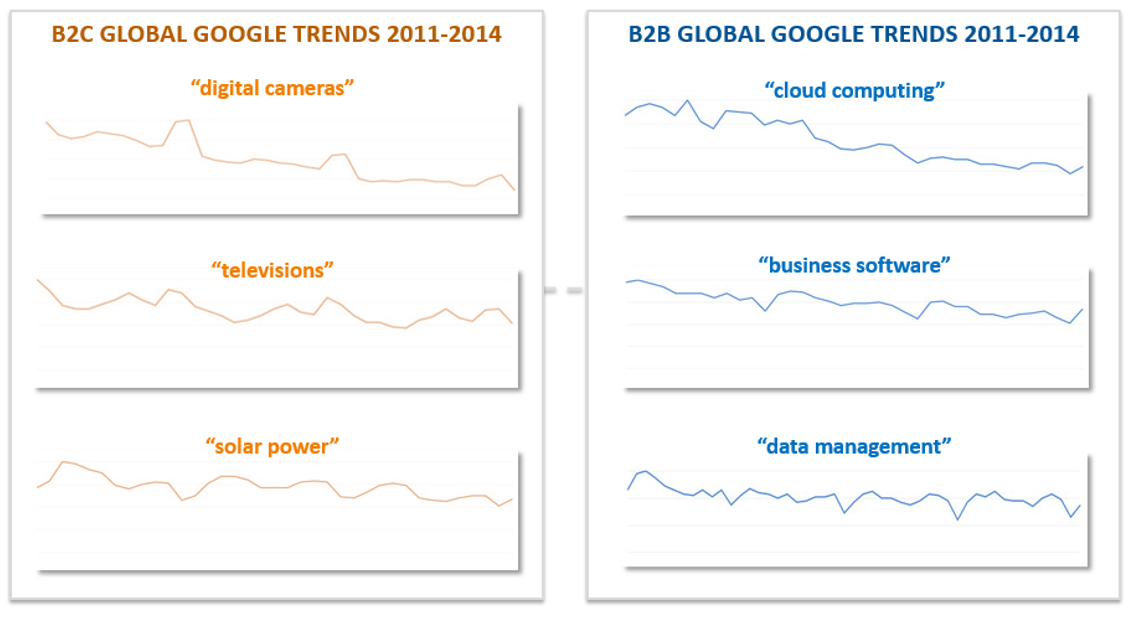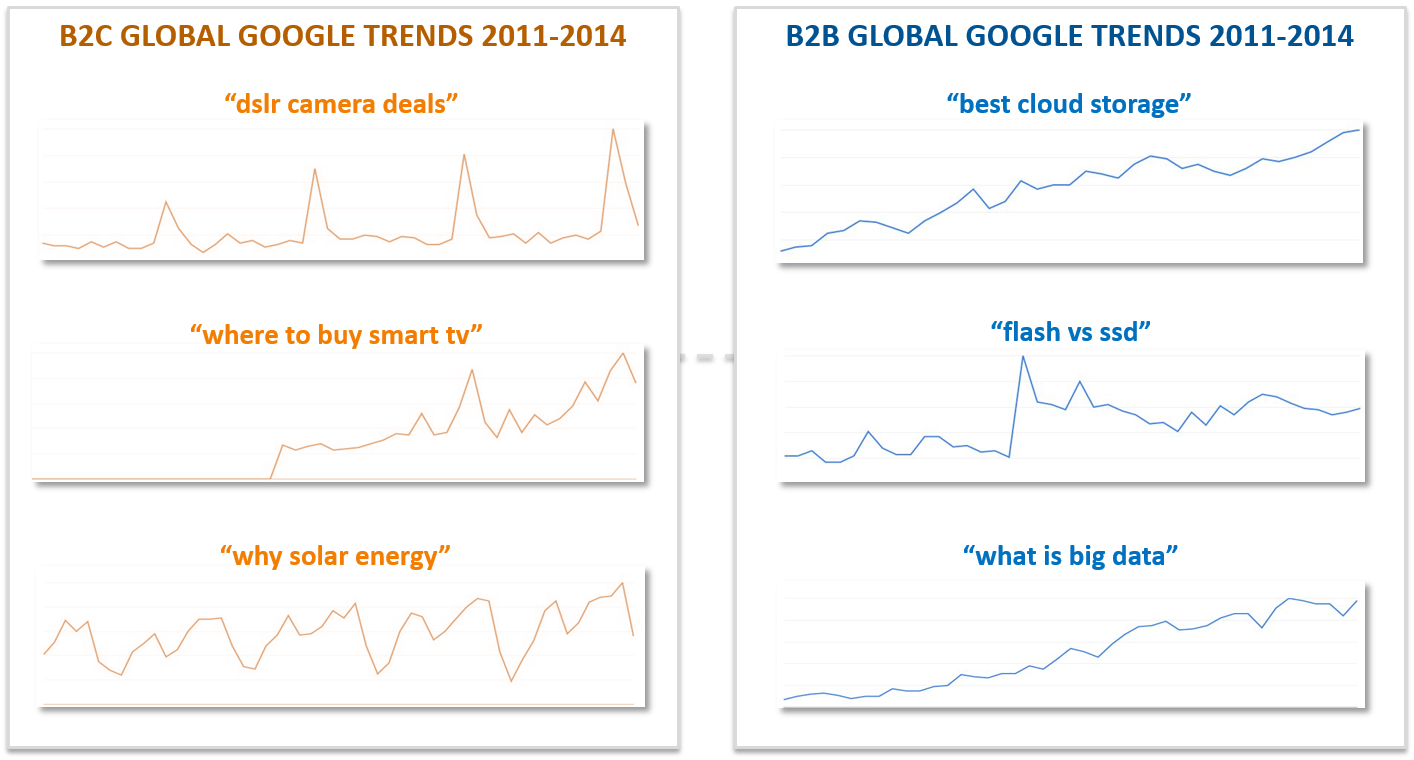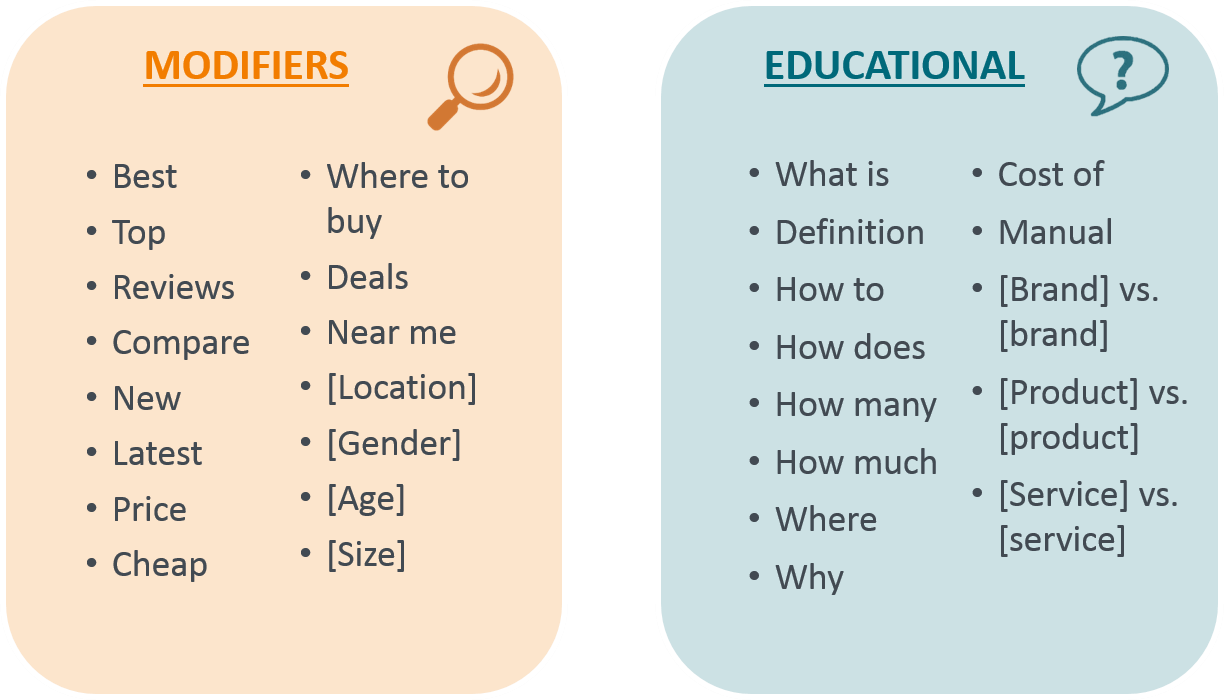On one of my webinars with Covario and ClickZ, I discussed the changing landscape of keyword searches. If you missed the webinar, you can listen to it here or see a summary below.
Is the landscape of keyword searches changing?
Recently I’ve seen a common concern across different companies. Many industry’s head terms, top keywords with the highest search volume, have been decreasing in search volume over time. Companies have been somewhat concerned whether they were investing in a dying industry. Therefore, I conducted research to identify whether a problem exists.
In the graphs above, it seems as if there should be a concern in many Business to Consumer and Business to Business industries. These charts show Google Trends, which visualizes keyword search volume over time. Looking at the results, it seems as if head terms are decreasing in popularity. I conducted further research to determine whether this was due to a dying industry or if something else was happening.
What is the change in search behavior?
Based on the above research, no, these industries are not dying. What’s happening is a change in user behavior. Users are now searching with long-tail keywords and the queries are more intent-based. People want to know the best brand or service, compare products, and they are not just searching “buy a smart tv,” but “where to buy a smart tv.”
Instead of a concern, there is a huge opportunity! Of the 3.5 billion global searches conducted each day on Google, 16%-20% of all those searches have never been searched before. This means that there is a huge opportunity to target long-tail keywords. But, how do you identify these long-tail terms?
Based on research across multiple industries there are commonalities in keywords rising in popularity. The chart below showcases what these commonalities are and summarizes them into keyword modifiers. You can take anyone of these modifiers below, add to a head term, and you will most likely see a rise in search popularity over time.
These keyword modifiers result in more intent-based searches and complete sentence queries. If a user wants to search the definition of a word, instead of searching “cloud computing” people are searching “what is cloud computing”. If users are not convinced of a particular product and want to know why they should buy it, instead of searching for “solar power” users are searching “why solar power”.
Why is this happening?
First, it’s because users are more educated not only on the subject matters themselves, but on how to use search engines and what queries to type. Additionally, due to our usage with mobile devices and voice search, our search behaviors are becoming more conversational over time.
Google is adapting to this as seen in the Hummingbird update which has helped display better search results when users add intent-based words to their queries. Google is even understanding vague keyword searches such as “restaurants near me.” And if people are searching “how much is solar power,” for example, Google understands that people want to find pricing information and the actual dollar amounts.
What do we do about it?
Since we see a change in search behavior and we understand why, the next most obvious question is how to adapt. If many of you have not already done so, it is advised to start researching long-tail keywords starting with your head terms + keyword modifiers seen above. Narrow down popular, high search volume terms and see whether you are visible for these keywords in the search results. Finalize a list of keywords where you need visibility improvement.
After you have a list of terms, it is advised to start developing content to target these queries. Below are common content development strategies to target terms rising in popularity:
- Dictionaries/glossaries
- FAQs/Q&As
- Resources
- Compare product/brand pages
- Tutorials/how to’s
- Support/help
- Adapt marketing language
- Social media Integration
You can build out educational website sections, adapt your marketing language, or integrate common questions and search queries within your social media campaigns.
Many companies have already applied some of these strategies and are currently being displayed in the search results as a thought leader within their industry. If you sold these products below, wouldn’t it be great if Google displayed you as a thought leader for that particular subject?
Does this drive revenue?
Surprisingly it does. Some have seen as much as a +33% year over year revenue growth when we applied similar strategies to other clients.
Want to learn more? Contact me at Cassandra.Gucwa@gmail.com.





